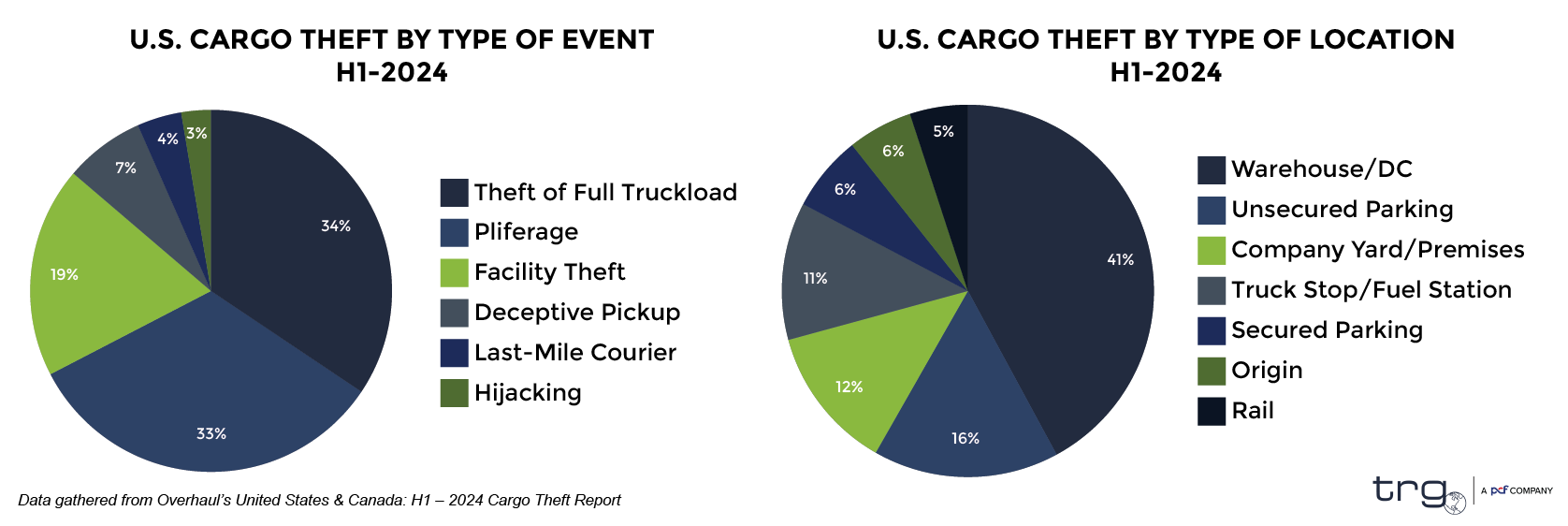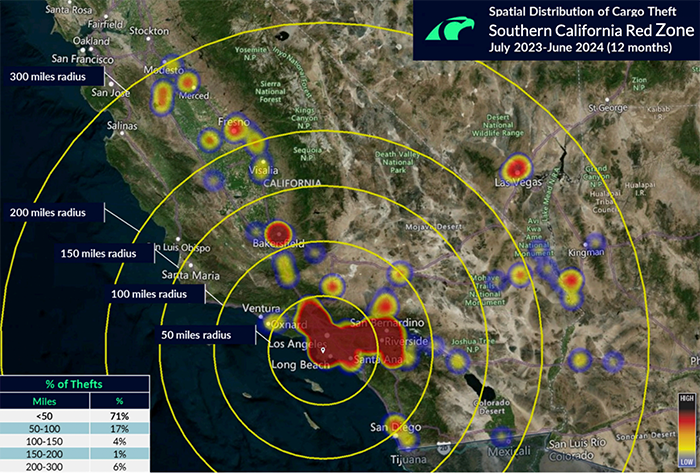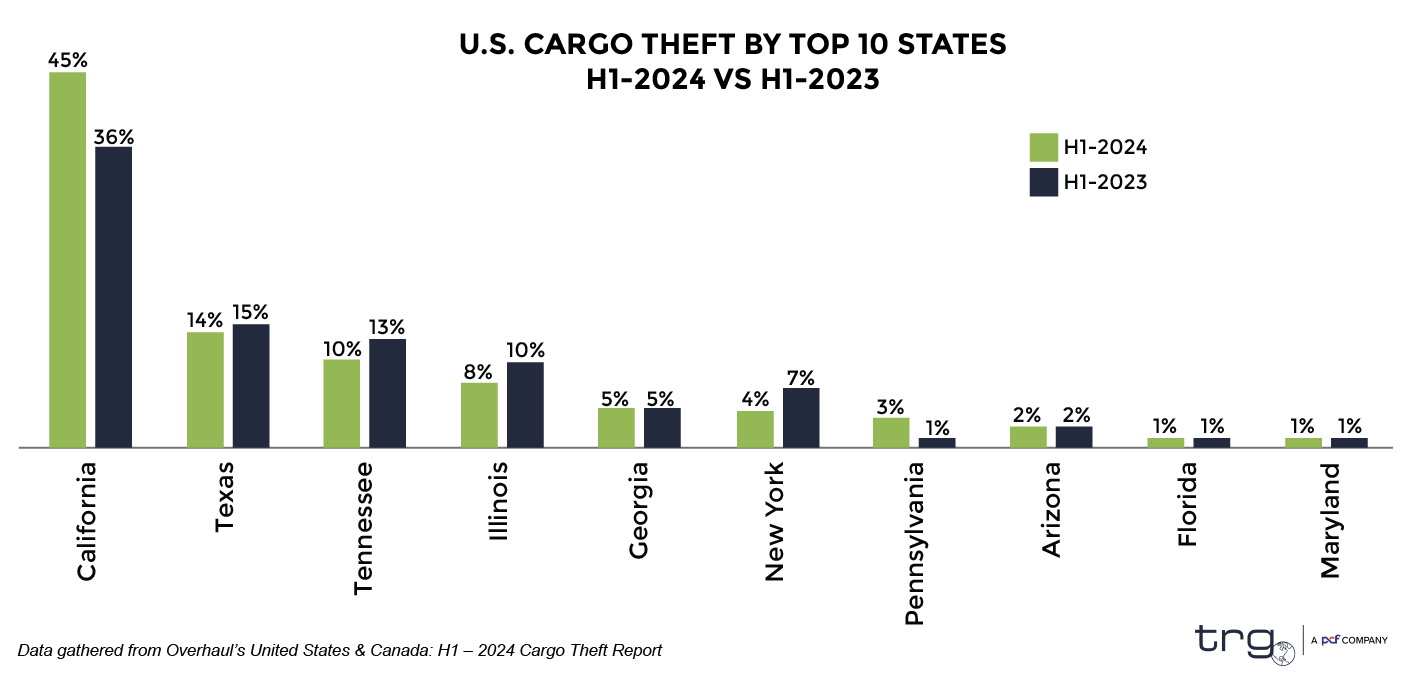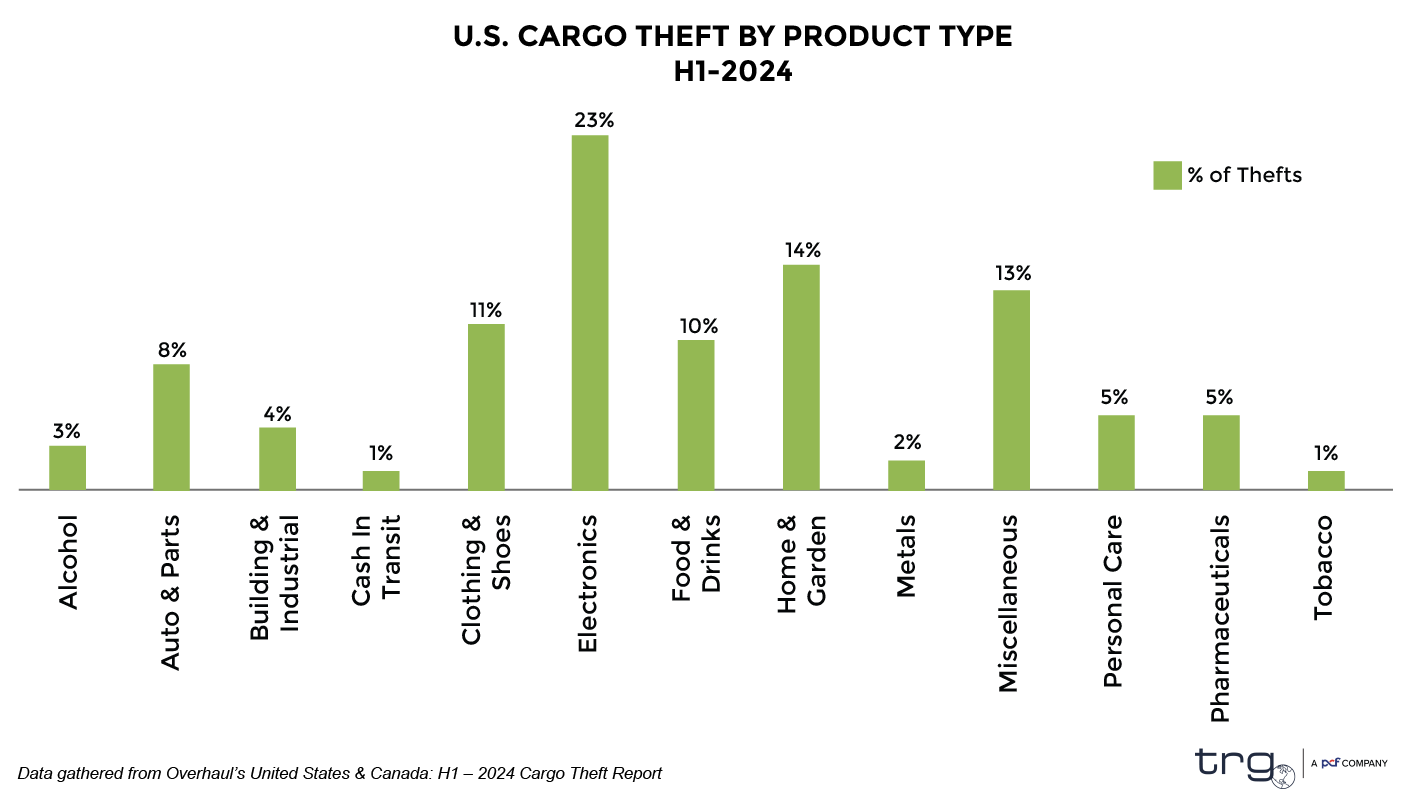Domestic Cargo Theft has become a growing concern throughout the United States as the number of incidents continue to rise in 2024.
When companies import goods into the United States, they typically think the riskiest part of the journey is over one those goods enter the country and while there are many things that can go wrong while your imports make the journey across the ocean, domestic cargo theft has been on the rise within the U.S.
The following is a brief breakdown of the data reported within Overhaul’s United States & Canada: H1 – 2024 Cargo Theft Report. To read their full report, you can download it here: Overhaul Cargo Theft Report.
Where in the Supply Chain Does Domestic Cargo Theft Occur?
There are certain moments within a supply chain that are riskier than others. These moments are when your goods are at the highest risk of being targeted by thieves. The good news is that by identifying these high risk points in transit, you can make adjustments to your security to better protect your cargo.
The below graphs illustrate where and how cargo cargo was stolen throughout the first half of 2024.

As you can see, 41% of the cargo theft in the first half of 2024 occurred while the goods were in storage inside of a warehouse. Warehouses present a prime opportunity for cargo to be stolen since this is typically an extended period of time when the goods are sitting in one location within little, and sometimes no, security. This lack of security remains a trend when we look at the 16% of cargo theft that occured within an unsecured parking lot.
When we look at how that cargo is being stolen, 34% are full truckloads meaning the entire truckload of goods were stolen in one event. While 33% were in pilfered which may mean that only a portion of the goods were taken at a time.
Where in the United States is Cargo Theft Happening?
It only makes sense that the majority of U.S. domestic cargo theft occurs in or around major ports throughout the United States. However, the number of cases within the southern California area far exceeds other zones in the U.S. with 36% of all cargo theft cases in a 12-month period. Criminals target this region due to its importance as a logistics hub, the presence of large distribution centers, and other industrial activities.
In the map below, included in the Overhaul Cargo Theft Report, a radius has been created in 50 mile increments coming out from the central hotspot of Torrance, California. This area is a significant logistics hub where many shipments depart from.

While California is the hotspot for theft of this kind, it is not the only state in which domestic cargo theft occurs. The bar graph below illustrates the top 10 states within the U.S. for theft.

What Is Being Stolen in Transit?
At 23%, electronics are the most common type of product stolen within the first half of 2024. This is primarily due to the valuable nature of that commodity. Within this product category, Televisions & Displays represented the highest volume with 32% of thefts, followed by Computers at 15%.
The average loss value across all incidents was $115,230 which is 83% higher than the H1-2023 average. However, within the Electronics, Auto & Parts, Clothing & Shoes, Home & Garden, and Pharmaceuticals product types, there were single events that resulted in a loss of product with a total value of over $1 million.

How Can You Protect Your Goods from Theft While in Transit?
The threat of domestic cargo theft in the United States is currently considered to be high and on the rise. This is primarily due to the continued increase in the level of organization and sophistication of criminal groups focusing on high value cargo. So it is of increasing importance that you take the safety and security of your shipments seriously.
The following are a few tips on what you can do to protect your cargo:
- Have a stand alone cargo insurance policy AND a stand alone cyber policy
- If the cost to move goods is too good to be true, then it is too good to be true
- Verbal confirmation with a trusted/known service provider
- Look for trucks with scratched/painted over off numbers
- Look for trailers with nuts and bolts instead of rivets
- Locations where trailers sit (however shortly) should be secure – i.e. control access, adequate lighting, congestion, video surveillance, guards etc.
While some of these tips may seem like “no brainers”, we often take the simple things for granted and make assumptions based on what we think is obvious. But when it comes to the safety of your goods while they are in transit, it is not the time to give a vendor the benefit of the doubt. Take the time to vet your providers and pay a little more for security measures. Because paying a little more now, may end up costing you a lot less later.







